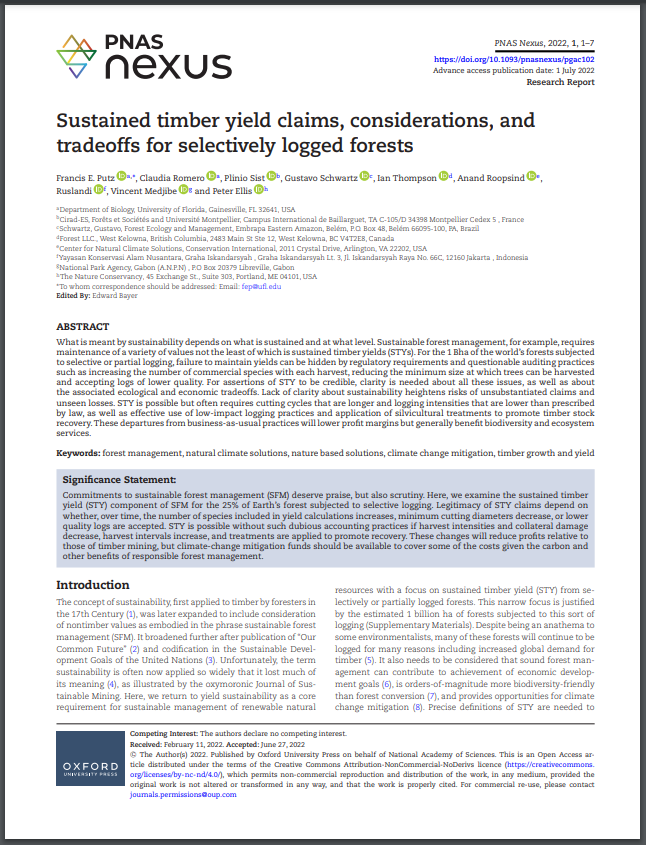
Autores: Francis E Putz, Claudia Romero, Plinio Sist, Gustavo Schwartz, Ian Thompson, Anand Roopsind, Vincent Medjibe, Peter Ellis
Año de publicación: 2022
País: Estados Unidos de Norte América
Idiomas: Inglés
Editorial: PNAS Nexus
A group of foresters from eight countries explore the many meanings of sustainability in reference to timber. Although explicit focus on the sustainability of natural resource management dates back to European forestry in the 17th Century, it is often unclear what is meant by claims that timber yields are sustained from the estimated 1 billion hectares (2.47 billion acres) of diverse tropical and temperate zone forests subjected to selective logging (i.e., partial cutting).
The authors explore three different accounting practices that can disguise diminished yields. First of all, yields can be sustained but at a lower level than the first harvest—the authors refer to the difference as the ‘primary forest premium.’ With every harvest, new species can be included in the mix, which is referred to as ‘logging down the value chain.’ Finally, if with each harvest smaller trees with worse qualities are included, yields might appear to be sustained while the forest is degraded.
Volumetric yields of timber can be sustained from selectively logged forests but only if harvest intensities and frequencies are reduced even more than the legal minimums. For example, in Amazonian Brazil, loggers are allowed to harvest up to 20 cubic meters of wood at 35 year intervals whereas to sustain yields, harvests should be limited to 10 cubic meters at 60-year intervals.
An alternative to reducing timber harvests would be for forest industries to manage forests and not just harvest timber as if it was not a renewable natural resource. Tree growth and timber yields can often be enhanced by simple silvicultural interventions such as freeing the crowns from coverage of lianas (i.e., woody vines). This particular treatment works as well for grapevine encumbered oaks in West Virginia as it does for trees throughout the tropics where lianas appear to be increasing in numbers and sizes in response to disturbance and climate change.
Forests that are responsibly managed retain their diversity and continue to provide the ecosystem goods and services on which humans and many other species depend. While sustainable forest management will remain an aspiration, clarity is needed about what is being sustained. Lamentably, use of the term ‘sustainable’ has broadened to mean no more than ‘responsible’ or ‘good’; there is even now a Journal of Sustainable Mining. This paper represents an effort to take back the concept of sustainability by shining light on how the term is used in regards to timber, which is where it started hundreds of years ago.